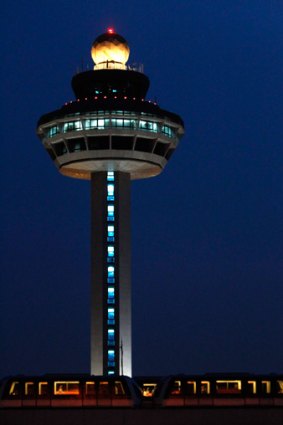By Air travel

Aircraft have vanished from air traffic control screens across Europe.
Dozens of aircraft briefly vanished from air-traffic control radars in Austria, Germany, the Czech Republic and Slovakia this week and last in separate incidents that Slovak authorities blamed on military electronic warfare exercises.
Air-traffic controllers in Austria and Germany said data about the planes' position, direction, height or speed went missing on June 5 and June 10, but the outages posed no serious danger to people on the aircraft travelling at high altitude.
Their Czech and Slovak counterparts also encountered cases of vanishing aircraft on the same days.
"The disappearance of objects on radar screens was connected with a planned military exercise which took place in various parts of Europe on June 5 and 10 and whose goal was the interruption of radiocommunication frequencies," the Slovak state Air Traffic Services company said in a statement.
"This activity also caused the temporary disappearance of several targets on the radar display, while in the meantime the planes were in radio contact with air traffic controllers and continued in their flight normally.
"Immediately after the identification of the problem with the displays, the side organising the exercises was contacted and the exercise was stopped."
It did not identify the military force, which Austrian media said was the NATO western military alliance. NATO had no immediate comment.
A spokesman for German Air Traffic Control said: "Planes disappeared from screens for a matter of seconds, here and there. The outages were sporadic and not grave."
"It must have been an external source of disruption. We are trying to identify the cause," the spokesman said.
In the wake of the disappearance of Malaysian Airlines flight MH370 in March there has been a growing focus on the tracking of passenger aircraft.
The airline industry has pledged to come up with proposals by September for a better system of tracking aircraft over oceans and other remote areas. But incidents in controlled airspace are relatively rare.
Europe's air corridors are among the densest in the world and there have been calls for better technology and coordination and a unified control network, although some air traffic controller unions oppose these measures.
In the recent incidents, extra air-traffic controllers stepped in in Austria and communicated with the affected planes by radio and took steps including increasing the safety distances between planes, a spokesman for Austro Control said.
He said that 10 planes transiting Austrian airspace were affected in the first incident and three in the second, and that he had heard that 50 aircraft were affected across Europe.
The incidents are being dealt with by European air navigation safety organisation Eurocontrol and EASA, the European air safety agency, he said. Neither of these bodies could immediately be reached for comment.
Richard Klima, spokesman for the Czech Air Navigation Service, said: "We saw random outages of aircraft detection within the system of the so-called secondary radar lasting several tens of seconds and up to several minutes. But thanks to the complete coverage of air space also through classic primary radars, we constantly had information about the positioning of airplanes and operational safety was not threatened."
A spokesman for Austria's Defence Ministry said it was investigating the incidents but could not immediately confirm how many planes were involved.
The spokesman said military radar - which actively track plane movements, unlike the passive radar used by civilian air-traffic control - had continued to work at all times.
REUTERS
Sign up for the Traveller newsletter
The latest travel news, tips and inspiration delivered to your inbox. Sign up now.